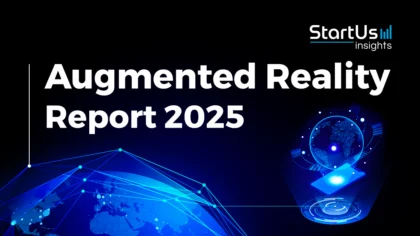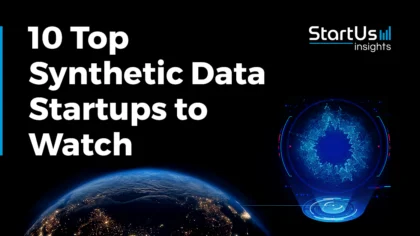Accelerate Productivity in 2025
Reignite Growth Despite the Global Slowdown
Researchers design and evaluate user interfaces that are efficient, effective, and suitable for various tasks and contexts. This ensures that technology is designed with the user in mind, making it easier and more efficient for people of all skill levels to use. Improved human-computer interaction (HCI) systems also improve productivity and user satisfaction, as well as reduce the likelihood of errors or frustration with technology adoption.
Additionally, HCI makes technology more accessible to people with different abilities and disabilities in fields such as healthcare and mobility. This article provides you with innovation insights based on our analysis of 647 human computer interaction examples & technologies and their impact on 10 industries. They range from gaming and marketing to automotive and education, among other sectors.
Tree Map reveals the Impact of Human Computer Interaction Examples on 10 Industries
Based on the Innovation Map, the Tree Map below illustrates the impact of human-computer interaction on 10 industries in 2023. HCI finds use in various industries to improve user experience and productivity. The education and healthcare industries use it to build interactive learning environments and medical devices to enhance patient care and safety.
In the gaming and entertainment industries, startups create immersive gaming and digital storytelling experiences for users. Fintech and retail industries leverage HCI for the development of secure banking apps and viewer-pleasing marketing strategies. HCI also finds use in manufacturing and automotive industries to improve industrial automation and product safety monitoring, and in the food and beverage industry to enable automated sorting.
Lastly, human-computer interaction solutions improve the collaboration between people and technology broadly, resulting in more efficient and enjoyable user experiences.
Global Startup Heat Map covers 1124 Human-Computer Interaction Startups & Scaleups
The Global Startup Heat Map below highlights the global distribution of the 1124 exemplary startups & scaleups that we analyzed for this research. Created through the StartUs Insights Discovery Platform that covers 3 790 000+ startups & scaleups globally, the Heat Map reveals that the USA has a high concentration of HCI startups, followed by Europe and India.
Below, you get to meet 10 out of these 1124 promising startups & scaleups as well as the solutions they develop. These human-computer interaction startups are hand-picked based on criteria such as founding year, location, funding raised, & more. Depending on your specific needs, your top picks might look entirely different.
Examples of Human Computer Interaction in 10 Industries
1. Education
HCI is becoming an integral part of the education industry as it enables effective and engaging learning experiences for students and teachers. It facilitates the design, evaluation, and implementation of interactive systems that enhance the learning experience in both online and offline classrooms.
Startups are using virtual and augmented reality (AR/VR), artificial intelligence, natural language processing (NLP), and gamification to develop educational modules for e-learning and also improve test-taking interfaces. Other startups are developing innovative interfaces that enhance curriculum design, assessment, feedback, personalization, and motivation.
This allows the education industry to create more accessible, inclusive, and adaptive learning environments for students of all ages.
MAGOS develops Hand -Tracking Gloves
MAGOS is a UK-based startup that makes finger and hand-tracking gloves for extended Reality (XR) applications in the education industry. The gloves feature sensors and haptic motors to provide realistic feedback for users interacting with virtual environments. They combine indoor localization tracking and orientation tracking to allow students to immerse in VR subject modules and interact with other 3D assets more efficiently.
The gloves also find use in the fields of finger/hand rehabilitation, pilot training, and gaming by offering a more intuitive and natural way of interacting with intangible assets. MAGOS provides educators with an effective method to enhance the effectiveness and efficiency of XR education and simulation while reducing costs.
2. Healthcare
The healthcare industry is implementing human-computer interaction to enhance the usability, safety, and efficiency of digital health systems. HCI improves the interaction between humans and computers in various healthcare settings, such as hospitals, clinics, laboratories, and homes. For this, startups utilize techniques like user-centered design, predictive modeling, eye-tracking, and actor-network theory to analyze and evaluate the user interfaces of healthcare devices and systems.
The current trends in HCI for healthcare include startups using electronic health records (EHR), robotic surgery systems, telemedicine applications, and wearable devices. Some startups are also exploring ways to use HCI to enhance healthcare delivery and patient outcomes, such as using VR-based dashboards to provide doctors with real-time information about patient health status.
Insai offers a Neuromodulation Headband
Danish startup Insai develops a personalized neuromodulation headband for neurological disorders and cognitive enhancement. Using electroencephalography (EEG) and transcranial magnetic stimulation (TMS), the headband monitors and modulates brain activity in real time.
It also utilizes artificial intelligence to tailor the stimulation protocols to each user’s brain state and cognitive goals. The startup uses electromagnetic stimulation to enhance attention levels and memory retention in the brain. Insai’s headband and accompanying platform offer a safe, non-invasive, and affordable platform for brain therapy and research.
3. Gaming
Human-computer interfaces influence the user experience, engagement, and satisfaction of gamers. HCI researchers in the gaming industry explore game user interface design, game mechanics, feedback, immersion, and accessibility as key areas of interest. Within the gaming industry, there is a rise in immersive reality experiences and interfaces. Game developers also use HCI principles to ensure that their games are accessible to as many people as possible.
This includes designing the game’s interface and controls to accommodate players with disabilities, such as color blindness or motor impairments. Startups are complementing these developments with solutions for haptic feedback-based gaming and brain-computer interfaces (BCI). Such solutions also help create interactive gaming experiences for differently-abled gamers. These newer HCI technologies create inclusive, immersive, and interactive gaming experiences for all gamers.
BrainLeap creates Gaze-driven Games
US-based startup BrainLeap provides gaze-driven video games for improving attention skills. These games train eye movement control and attention skills, which are foundational to working memory, inhibitory control, and cognitive flexibility. Users play the games only using their eyes, with an eye tracker device that tracks the player’s gaze and provides real-time feedback.
The games gradually shape the behavior of children and improve the speed, accuracy, and control of their eye movements and attention. The startup designs these games for schools and families with children who have attention challenges, such as ADHD or dyslexia.
4. Fintech
In the fintech industry, human-computer interfaces enable users to interact with complex financial systems in a user-friendly and efficient way. It enhances the usability, accessibility, and security of fintech applications, as well as improves customer satisfaction and loyalty via easy banking applications.
The major HCI technologies that the fintech industry implements include biometric authentication and authentication-based interfaces, voice and chat interfaces, as well as AR/VR experiences. Many startups develop mobile banking apps that allow users to manage their finances from their smartphones easily. Some banks also implement chatbots within their platforms to engage users and provide personalized recommendations.
Yosh.AI develops a Banking Voice Assistant
Yosh.AI is a UK-based startup that offers voice-based AI chatbots and virtual assistants to automate communication with customers within the banking sector. It leverages automatic speech recognition (ASR), NLP, and Google Dialogflow to enable accurate speech recognition and human-like conversations.
The startup connects the chatbot to various communication channels that the bank uses such as websites, Messenger, Whatsapp, and Google Business Messages. Yosh.AI also integrates with customer relationship management (CRM) and external systems to automate conversations and improve customer satisfaction.
5. Marketing
Human-computer interaction enables marketers to create engaging and personalized experiences for potential customers. Marketing agencies use HCI principles to design user interfaces and advertising kiosks in public places to attract the attention of consumers. Startups are integrating voice assistants and chatbots along with augmented reality and gesture recognition to create immersive advertising experiences.
These innovative solutions improve customer loyalty and eyeball retention which are key to advertising success and brand recognition.
Spacetouch facilitates Interactive Advertising
Spacetouch is a Chinese startup that develops SPT51x, a dedicated integrated circuit (IC) with capacitive gesture sensing technologies for advertising applications. It powers the panels on marketing displays and kiosks and features pressure-sensing functions. It has high touch sensitivity and low power consumption, making it a more effective marketing tool for longer time periods.
The IC realizes the difference between single-click, double-click, multi-click, and slide, to meet the application requirements of touch interaction of various monitors. It also adjusts the sensitivity of touch independently through software without needing external capacitors, which saves application space and costs. Spacetouch allows companies to create interactive and engaging advertising experiences to attract and retain consumers.

6. Retail
The retail industry uses HCI to enhance customer experience, increase sales, and optimize commercial operations. Stores are implementing self-checkout kiosks to allow customers to scan and pay for their purchases without the need for a cashier. Interactive displays are also becoming more common in retail stores.
They feature touchscreens with interactive user interfaces to provide customers with information about products and services. Interactive displays also help customers make more informed purchasing decisions and increase engagement. Startups are using retail virtual assistants to interact with customers, answer questions, provide recommendations, and even make purchases on behalf of the customer.
Neural Lab develops a Touchless Retail Interface
Neural Lab is a US-based startup that provides touchless user interface solutions for safe and convenient human-computer interaction. The interface uses any webcam to translate hand gestures into mouse clicks and movements for any computing device, such as laptops, tablets, kiosks, and ATMs.
The startup installs it without modifying existing hardware and it works from behind glass enclosures for additional sanitary measures. The use of this touchless interface minimizes interaction with public surfaces, reducing the chances of contracting diseases. Neural Lab’s touchless technology is ideal for retail and point-of-sale applications, requiring minimal contact.
By using Neural Lab’s touchless user interface, retail businesses enhance customer experience, increase checkout speed, and reduce health risks.
7. Manufacturing
Human-computer interaction systems enable efficient and safe production processes. Companies are using novel interfaces to track the performance of machines on the factory floor. Operators use human-machine interfaces (HMIs) to adjust machine settings and control production processes. This enhances the quality and productivity of human workers, as well as reduces factory errors and risks.
Startups are working on monitoring devices with accompanying interfaces, such as smart cameras, to check the quality of products and identify defects during the manufacturing process. Manufacturers are also integrating voice or gesture control into cobots to assist workers better and make the production process faster and more efficient.
Mantis Robotics advances Human-Robot Collaboration
Mantis Robotics is a US-based startup that provides fenceless industrial robots that interact and collaborate safely with humans. The startup tailors the robots for flexible factories and warehouses, where human-robot collaboration occurs without sacrificing productivity. Mantis Robotics uses tactile sensing and safety motion control technologies for effective manufacturing and warehouse fulfillment.
By reducing the need for human interaction in hazardous working conditions, robots also promote a safer working environment. The cobots are easily deployable and do not require any code to do so, making them compatible with existing workflows. Mantis Robotics offers flexible, scalable, and cost-effective robots for companies to automate their manufacturing processes and improve productivity.
8. Food & Beverage
HCI-based devices are now common in the food and beverage industry, especially in automated systems that control the processing and packaging of food products. These systems use the internet of things (IoT) sensors, monitoring software, and user interfaces to streamline production processes and reduce the risk of errors or contamination. Companies use HCI to help with food sorting, quality control, production, and packaging, as well as overall supply chain management.
Many startups are providing monitors attached to sensors that track and control critical parameters such as temperature, humidity, and pressure during food production, storage, and transportation. By providing real-time data and alerts, HCI systems help operators identify and respond quickly to potential issues that compromise food quality or safety.
VOICEplug AI facilitates Voice-based Food Ordering
VOICEplug AI is a US-based startup that develops an AI-based voice ordering platform for restaurants. It enables customers to place orders using natural voice conversations over the phone, drive-thru, web, or mobile platforms. For this, VOICEplug AI utilizes voice recognition and NLP to understand customer requests, offer personalized recommendations, and complete payments.
The platform allows restaurants to reduce labor requirements for order taking, thus lowering the cost per order. This solution helps restaurants leverage voice commerce, improve customer experiences, and boost revenue opportunities while reducing costs.
9. Automotive
Human-computer interaction allows drivers and passengers to interact with various features and functions of vehicles nowadays. Many modern vehicles feature touchscreen displays that allow drivers to interact with and enhance comfort, convenience, and entertainment in cars. The automotive industry also adopts voice recognition technology, allowing drivers to control certain features of their vehicles using voice commands.
Automotive manufacturers also employ monitors in the production line, allowing operators to monitor and adjust various parameters such as the speed of the assembly line, the flow of materials, and the operation of machinery. Some startups are creating smart dashboards that display personalized information and alerts, or immersive audio systems that adapt to the driver’s mood and preferences.
Integrating heads-up displays (HUDs) to project information such as speed, navigation, and other data onto the windshield allows drivers to keep their eyes on the road.
Connecta Automotive offers an In-Car Infotainment Dashboard
Hungarian startup Connecta Automotive develops an in-car infotainment interface. The interface, installable on any car dashboard or display, enables navigation, voice control, and driver assistance in the vehicle. The interface supports both gesture and voice recognition, enabling hands-free access for the driver and preventing road accidents. It also offers personalized advanced driver assistance system (ADAS) experiences using the car’s location data.
This enables the creation of custom safety features, such as collision avoidance, lane departure warnings, and adaptive cruise control, based on their specific driving behavior and conditions. Connecta Automotive’s in-car interface allows car manufacturers and service providers to enhance the in-car experience for both drivers and passengers whilst also improving vehicle safety.
10. Entertainment
The entertainment industry is implementing HCI-based systems to enable immersive and engaging experiences for users. It allows for interactive experiences in theme parks, museums, and other entertainment venues. Visitors utilize touchscreen kiosks, gesture recognition, and voice commands to interact with exhibits or ride simulators. Additionally, startups are developing VR headsets that use sensors to track the user’s movements and display virtual environments in real-time.
Other startups develop AR apps that overlay digital characters or information to live events or performances to provide more intuitive experiences while in bigger crowds. The film industry also increasingly relies on HCI to capture the movements of actors or performers and translate them into digital animations using motion capture.
AXiiO develops a Standalone VR Entertainment Kiosk
AXiiO is a Finnish startup that creates a standalone VR entertainment kiosk/viewer to facilitate immersive experiences for customers and audiences. The startup’s VR Binocular allows users to explore historical and cultural content in 3D VR panorama photos, with live virtual actors. It also enables visitors to see 3D historical photos and recreations of events that occurred in a certain location.
VR Binocular also uses UV disinfection and remote management tools connecting to the AXiiO GLOBAL platform to ensure safety, convenience, and quality. The VR Binocular enables theme parks, museums, and all public venues to enhance their brand story, showcase their products or projects, or provide educational and entertaining content for their visitors.
Discover All Human-Computer Interaction Startups
With the advancements in HCI technology, the way users interact with devices is changing significantly. Startups are actively working on brain-computer interfaces that allow the user to control computers with their thoughts. Another promising avenue is virtual and augmented reality, offering a more immersive experience for media consumption and workplace training.
Additionally, NLP and machine learning will enable devices to understand and respond to human commands more accurately. As AI continues to improve, more intelligent personal assistants, chatbots and predictive systems will improve people’s quality of life. Get in touch to identify specific HCI startups & solutions that advance your business!
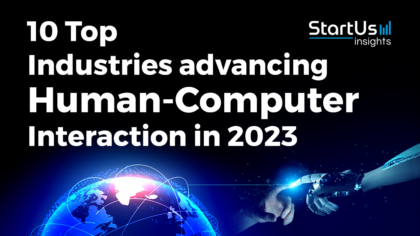
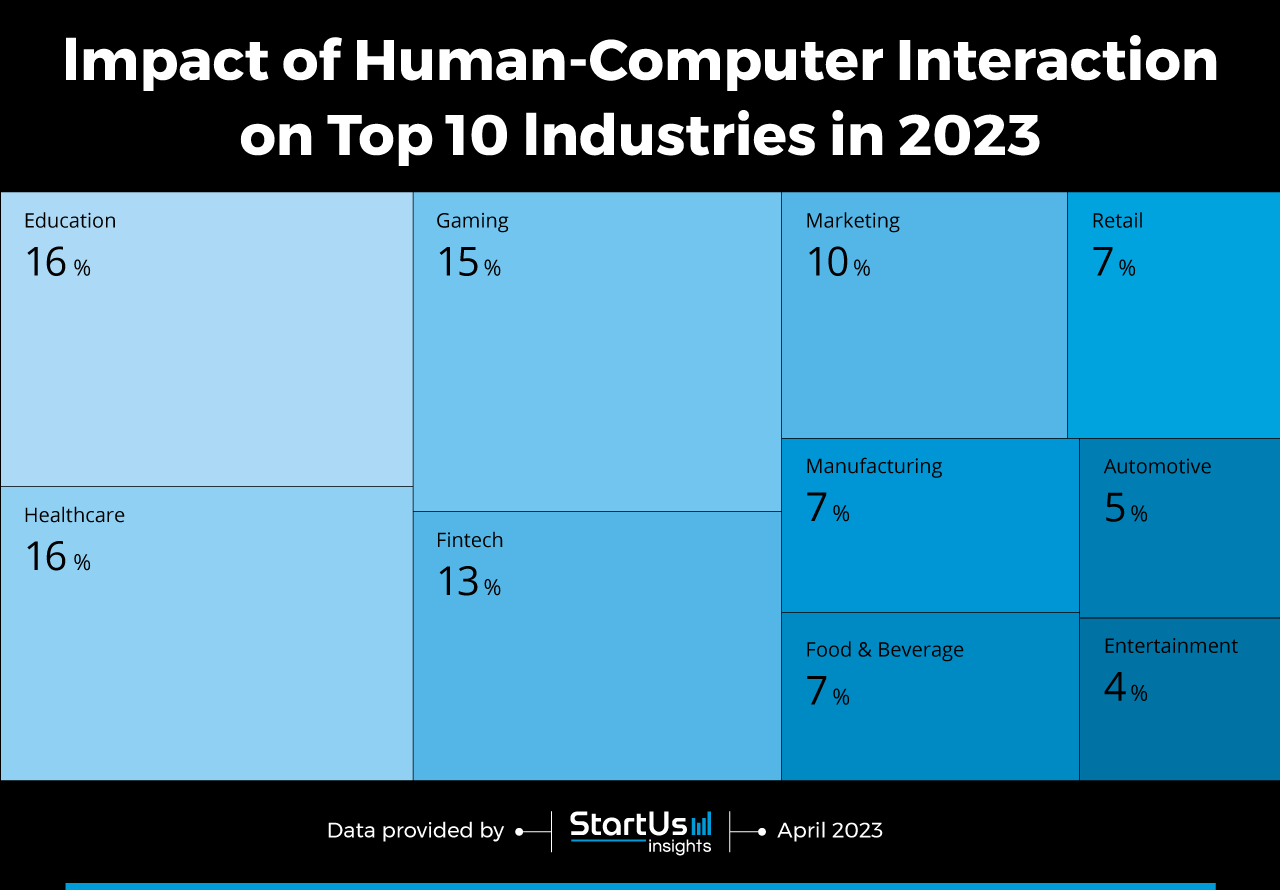
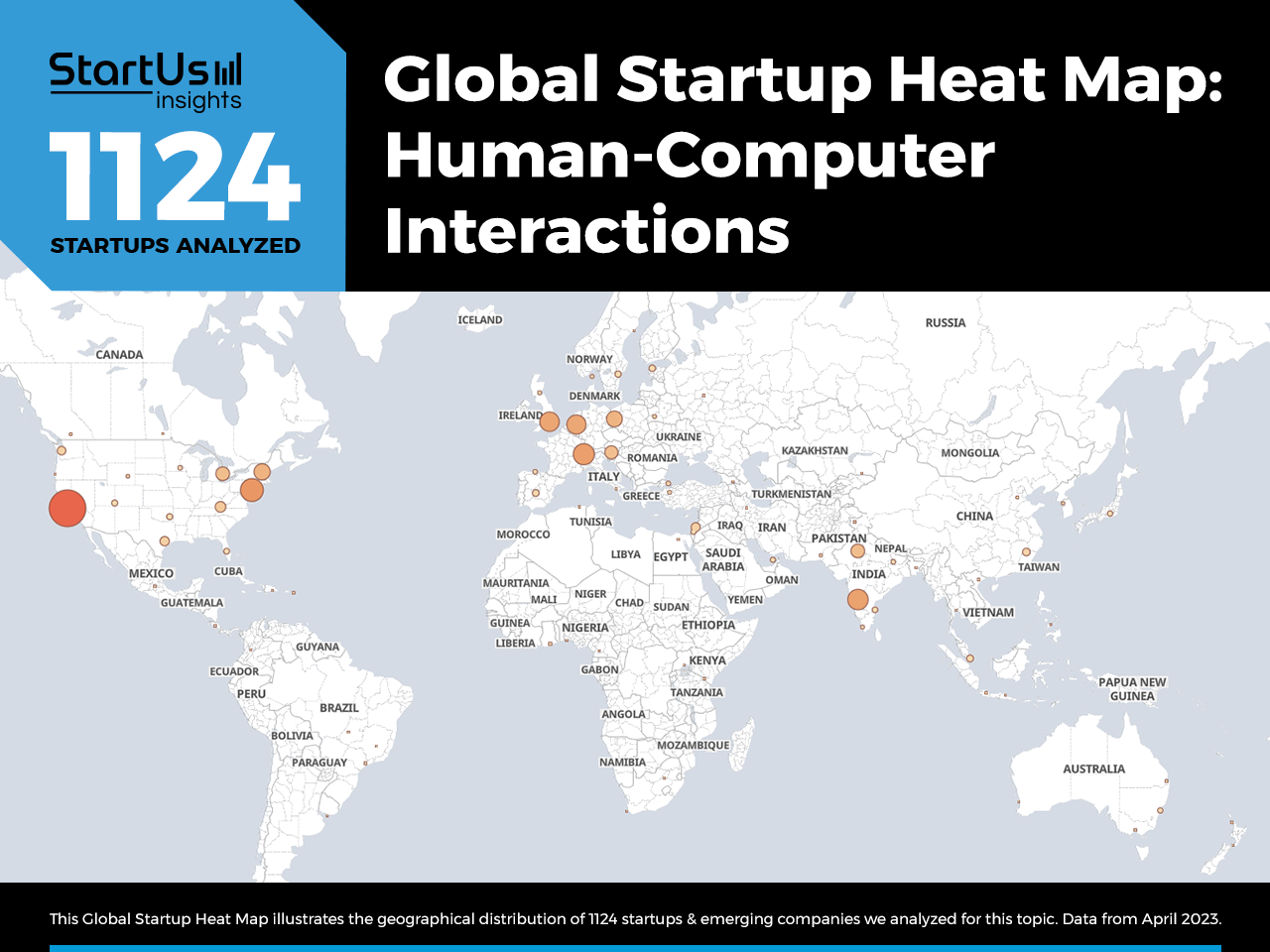
![10 Top Digital Twin Startups and Companies for Industry 4.0 [2025]](https://www.startus-insights.com/wp-content/uploads/2025/06/Digital-Twin-Startups-for-Industry-4.0-SharedImg-StartUs-Insights-noresize-420x236.webp)
